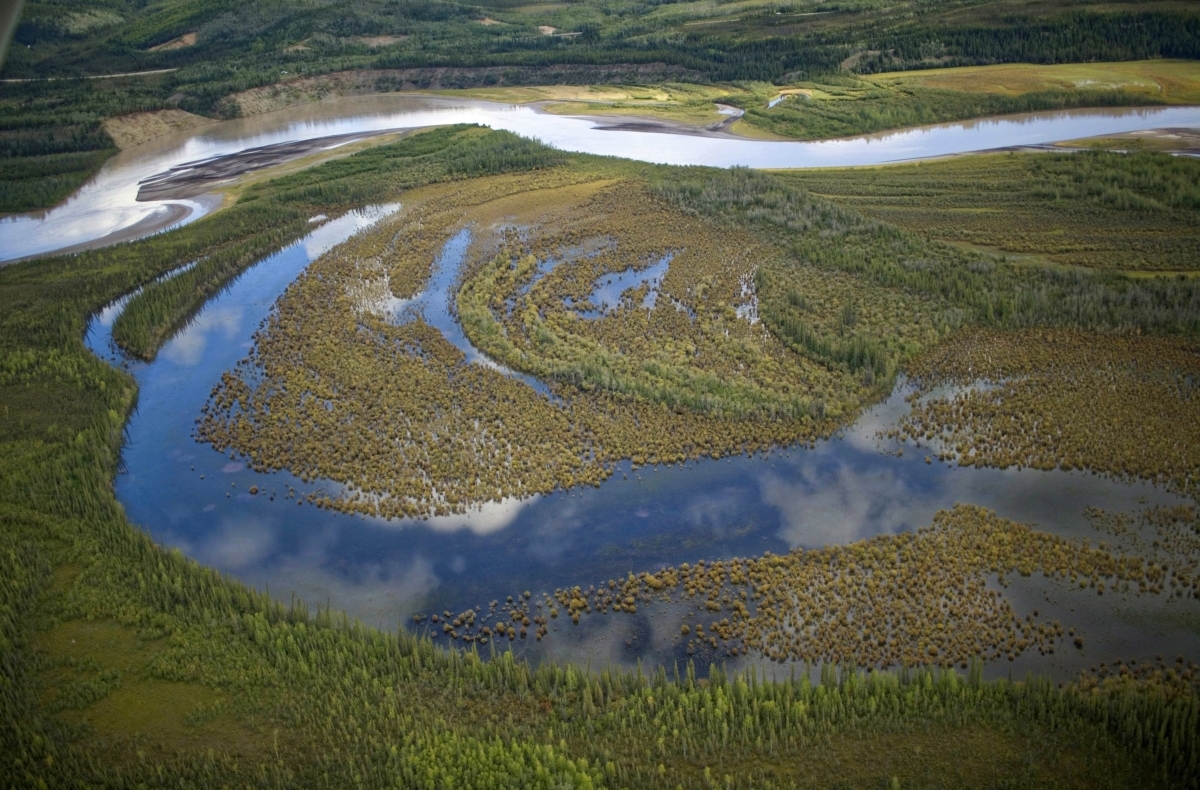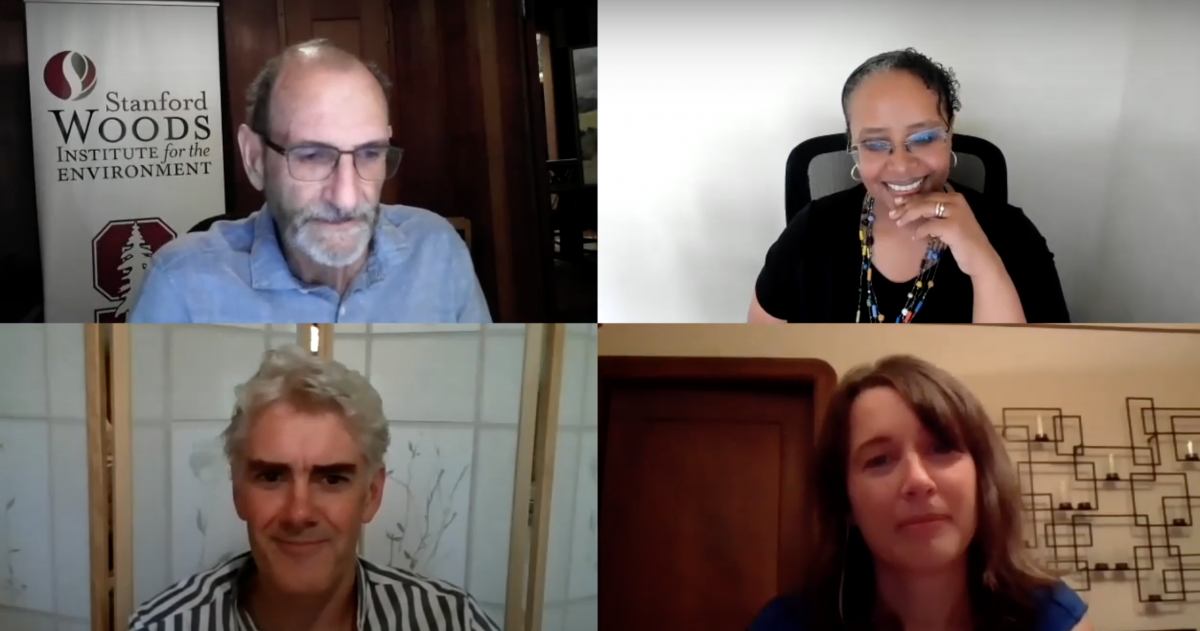The Woods Institute is now part of the Stanford Doerr School of Sustainability
The Role of Natural Climate Solutions

Land stewardship alone could provide an estimated 30% of the global cost-effective solution to climate change, Bronson Griscom, senior director for natural climate solutions at Conservation International, said at a recent event focused on the role of natural climate solutions. The panel discussion was the first in a series of Stanford Woods Institute for the Environment-hosted webinars focused on important emissions reduction elements to be considered as part of a U.S. playbook of climate solution options.
Natural Climate Solutions
Natural climate solutions (also known as nature-based solutions) refer to a wide-array of practices that decrease greenhouse gas emissions from ecosystems or that increase carbon storage resulting in negative emissions, the net removal of carbon dioxide form the atmosphere, explained Chris Field, director of the Stanford Woods Institute for the Environment. Protecting and restoring forests, increasing organic matter in grassland or cropland soils, and focusing on coasts and oceans are just some examples of natural climate solutions. Major advantages of these solutions include simple and well-known technology, affordability, and co-benefits, such as biodiversity conservation, habitat improvement, watershed protection, and support for lower-income and indigenous communities.
Soil has immense potential as an avenue for carbon storage, but because soils vary in material, biome, and process, when researchers try to upscale carbon numbers to global or even region landscape scales, more modelling support is needed to get accurate numbers for carbon budgets, discussed Asmeret Asefaw Berhe, professor and Falasco Chair in the Earth sciences, life & environmental sciences department at the University of California, Merced. Despite the hurdles, Berhe, an expert on soils, explained that this work is continuously improving and it is getting easier and quicker to estimate how much carbon is in soil and how it changes with different types of management practices.
Win-Wins
Scientists can predict how a change in ecosystems leads to a change in its benefits to people by modeling the ecological supply of those benefits and the human demand for them, said Rebecca Chaplin-Kramer, lead scientist for Stanford’s Natural Capital Project. With better satellite data and technology available every year, scientists are starting to understand and map these benefits and their potential synergy with nature-based climate solutions.
When land tenure security is improved for local communities, particularly indigenous groups, it tends to result in reduced loss of native ecosystems, said Griscom. A large portion of forest lands are managed for timber production. We often think of this in a negative context for the environment, but there are also good actor logging efforts that actually protect forests from being converted for other land uses. If incentives are created for loggers to be good stewards of natural forests, it would benefit ecosystems, carbon storage, and local jobs.
Close to half of the world’s soils, particularly on working lands, are considered degraded and less able to support agricultural or plant production, said Behre. Close to a billion people around the world lack food and nutritional security and access to safe drinking water sources. Focusing on the health of soils to benefit carbon storage may not be enough motivation for many populations in the tropics, but the need to improve the soil that they depend on to grow their food, feed, and other needs can be very compelling. Improving soil health, which includes carbon sequestration, should be part of any informed effective strategy for climate mitigation, explained Behre.
Economically, benefit stacking, combining carbon finance for storage with payments for ecosystem services by private companies, utilities, municipalities, or other actors, has a lot of potential. In the continental U.S., of the 50% of land that has direct local benefits for people, 85% of it has significant value from a climate solutions perspective, mostly areas in the Pacific Northwest and Eastern U.S., discussed Chaplin-Kramer.

Path Forward
Though not a silver bullet, a price on carbon can be transformative for climate solutions, said Griscom. Given the number of low-cost options to mitigate climate, adding even a limited price on carbon and creating a financial incentive for farmers and communities would unlock many natural climate solutions. Policy makers need to be careful, however, because perverse incentives could be created with a over-arching carbon price, such as creating carbon-dense monospecific land management which has no multi-benefits, warned Chaplin-Kramer. It is also important plan for and understand who the beneficiaries are of different strategies in order to ensure equity and access to those most in need.
For farmers and land managers, there is a fear that they will not be able to reap the benefits from the costs they put in to managing for natural climate solutions, explained Behre. Maintaining best practices on land costs time and money and the market and prices for commodities is highly uncertain. It’s possible that if farmers and land managers were paid a little for carbon sequestration, then that may open up a much larger scale adoption of climate smart land management practices.
Natural climate solutions is a complement and not a substitute for decarbonizing the energy and industry sectors, warned Field. However, less than 2% of global mitigation investment is going into natural climate solutions, said Griscom. When cost barriers are hit while decarbonizing other sectors, adding in investing in natural climate solutions can make the most effective use of climate solution dollars.
Natural climate solutions are one of the most equitable policy-based recommendations that we can make for climate change mitigation, argued Behre. Improving soil degradation through carbon sequestration not only helps mitigate climate change, it improves the lives of some of the world’s most marginalized people.
Contact Information
Christine H. Black
Associate Director, Communications
650.725.8240
ChristineBlack@stanford.edu
Devon Ryan
Communications Manager
650.497.0444
devonr@stanford.edu
Rob Jordan
Editor / Senior Writer
650.721.1881
rjordan@stanford.edu


